HP LaserJet Enterprise M506x review
This printer is laser-focussed on saving your business time and money
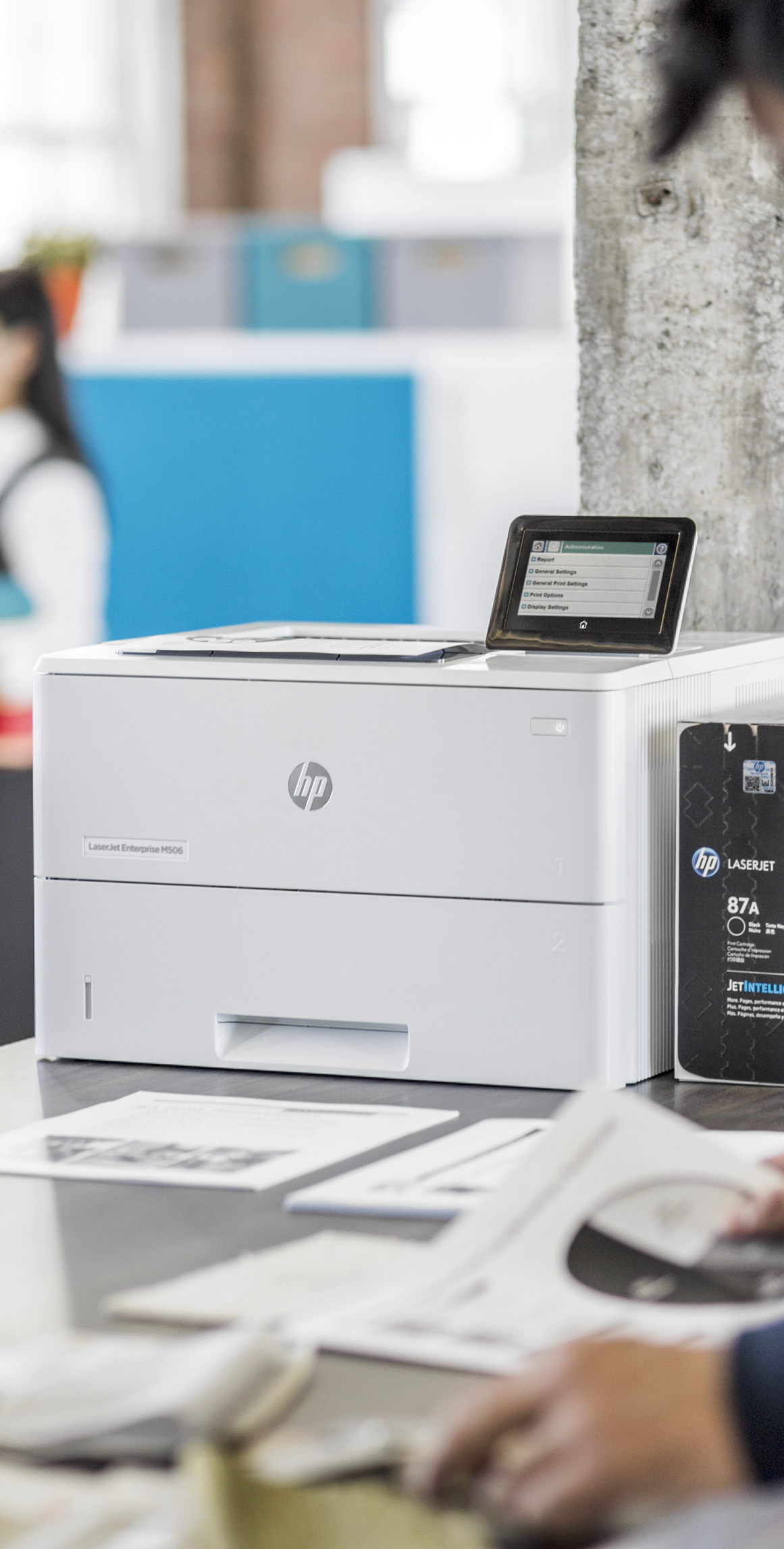

Fast performance, high print quality and best-in-class energy efficiency from this compact workgroup mono laser.
-
+
Compact; Large input tray options; Good print quality
-
-
Touchscreen could be more intuitive

The HP LaserJet Enterprise M506x sits at the top of a new three-model range of workgroup mono laser printers. With a top speed of 43 pages per minute (ppm) it's swift rather than quick, but HP claims a time-to-first-page of just 8.5 seconds from sleep. In practice, on typical jobs, this could make it quicker than many rivals with a faster outright engine speed: elsewhere it's quite common to wait 30 seconds or more for a sleeping printer to cough up its first page.
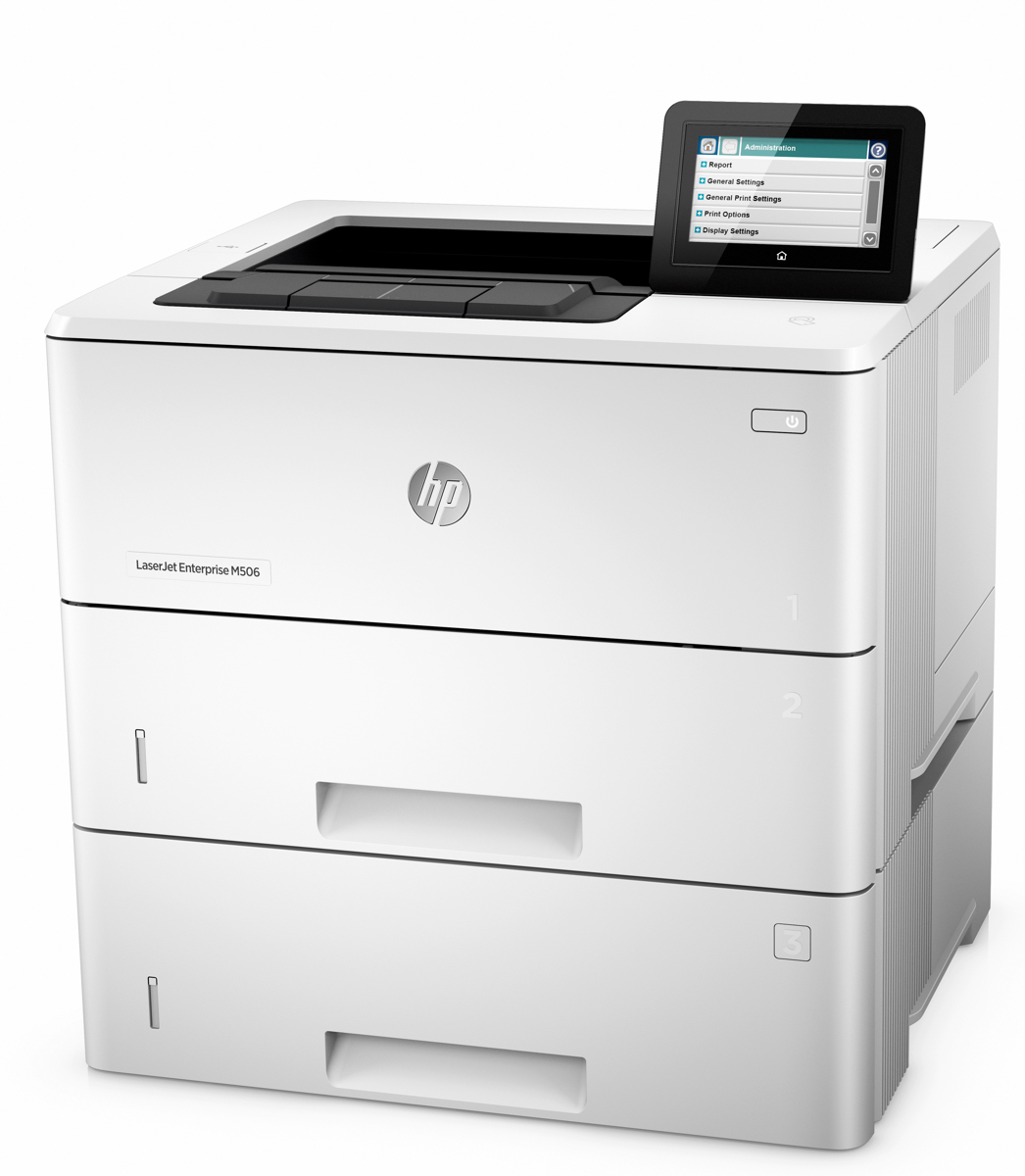
HP says it's reduced the footprint of the M506 range by 25% over its predecessor, and it's certainly among the smaller and lighter printers in this class. The M506x sits atop two 550-sheet paper trays, has a colour touchscreen control panel, and has support for NFC-enabled direct wireless printing. The mid-range M506dn misses out these advanced features and drops one of the trays, but is good value at around 100 less. We'd question whether there's a need for the base M506n, which doesn't offer automatic duplexing - it doesn't seem to be widely available, anyway.
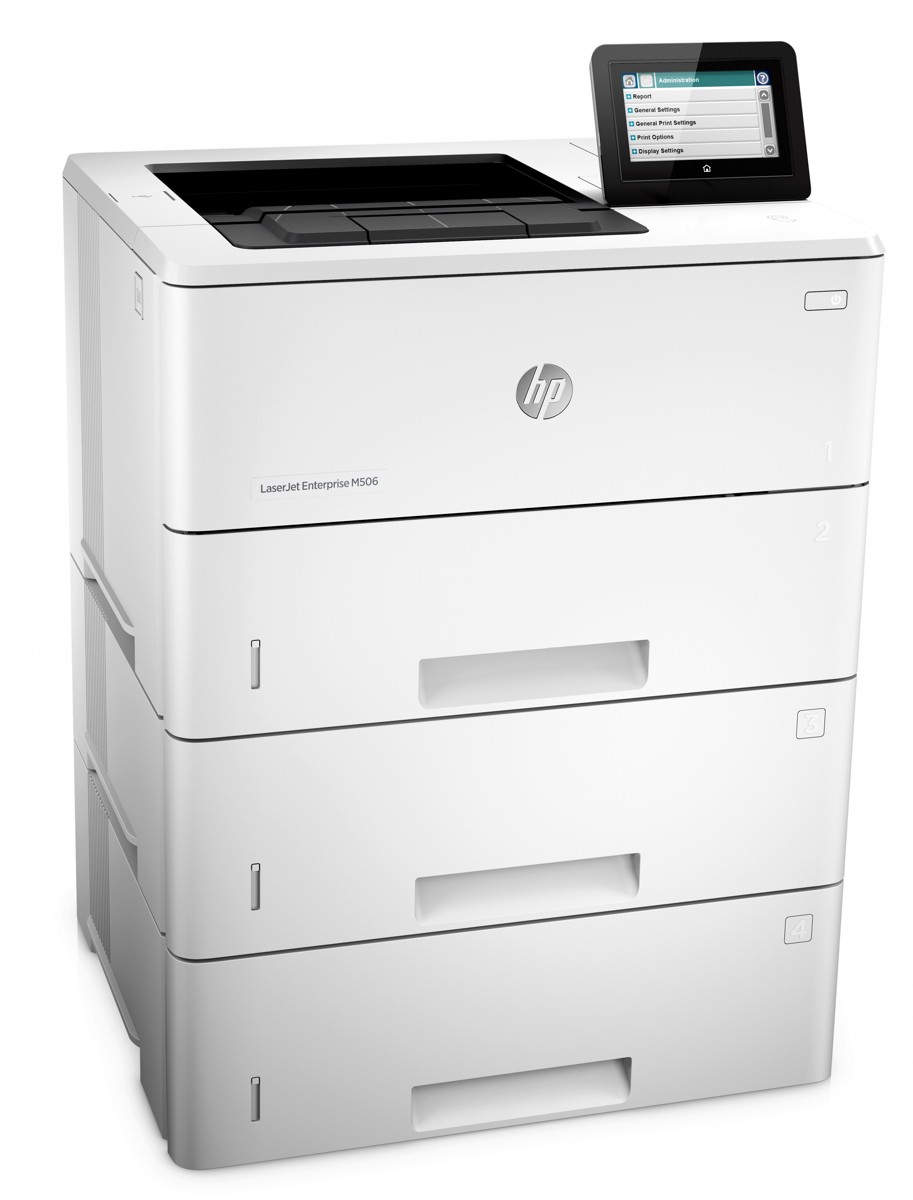
As standard, the full range can print at up to 1,200 dots per inch (dpi), and each has a USB and Gigabit Ethernet port. There's good scope for expansion, with all three models supporting up to four 550-sheet trays for a 2,300 page total. You can boost their 512MB of memory to 1.5GB, and add a hard disk or Trusted Platform Module too, but the output bin is fixed at 250 sheets - and you'll need to pay to extend the measly one-year RTB warranty.
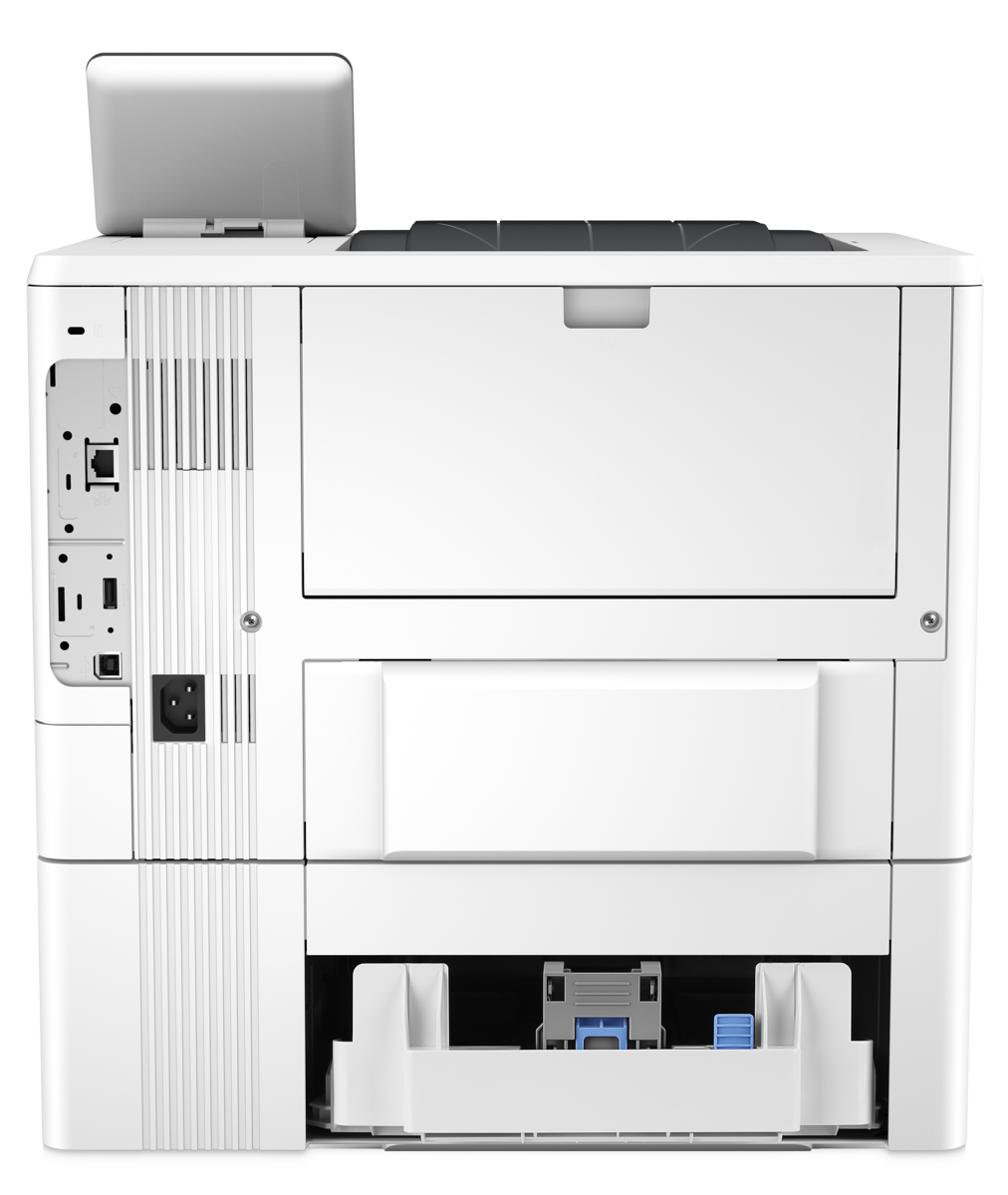
Installation and control
The M506x ships separated from its additional 550-sheet paper tray, but installation simply involves dropping it on top and plugging it in. The driver installer is simple, but we quickly ran into problems where the printer would go permanently offline moments after we'd last used it. After lots of repeated re-installing and head scratching, this appeared to be something to do with another manufacturer's printer driver already on the Windows 10 virtual machine we use for printer testing - we had no further issues after this was uninstalled.
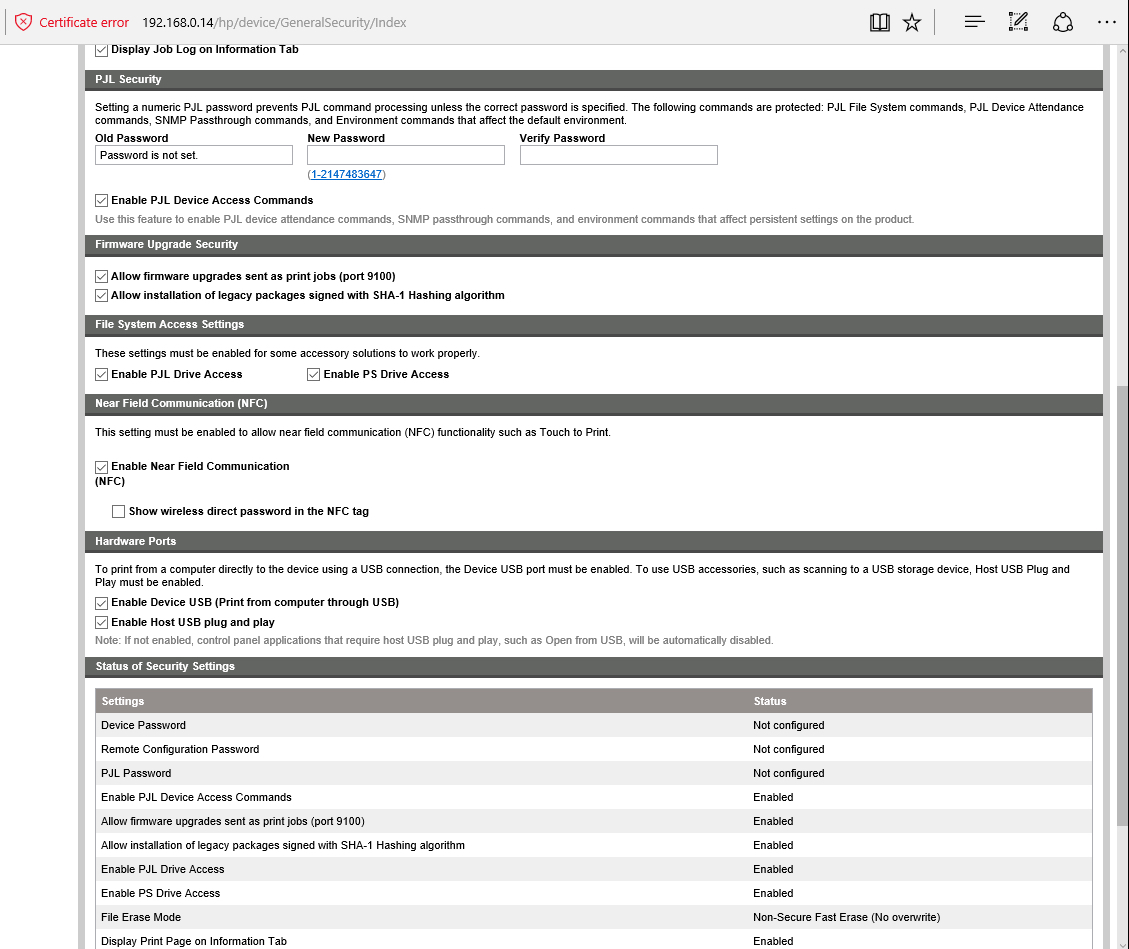
The security page of the comprehensive web admin interface. NFC is disabled by default.
This printer's control panel is a touchscreen mounted to the right of the output bin, adjustable on a stiff hinge from flat to about 60 degrees. It's the gateway to a comprehensive set of controls and options, with a configurable service access code to protect sensitive settings. Like HP's consumer printers, the menu responds to tap and drag gestures, but it's a touch laggy and not as intuitive: like many other enterprise printers, the presentation and user experience could be improved.
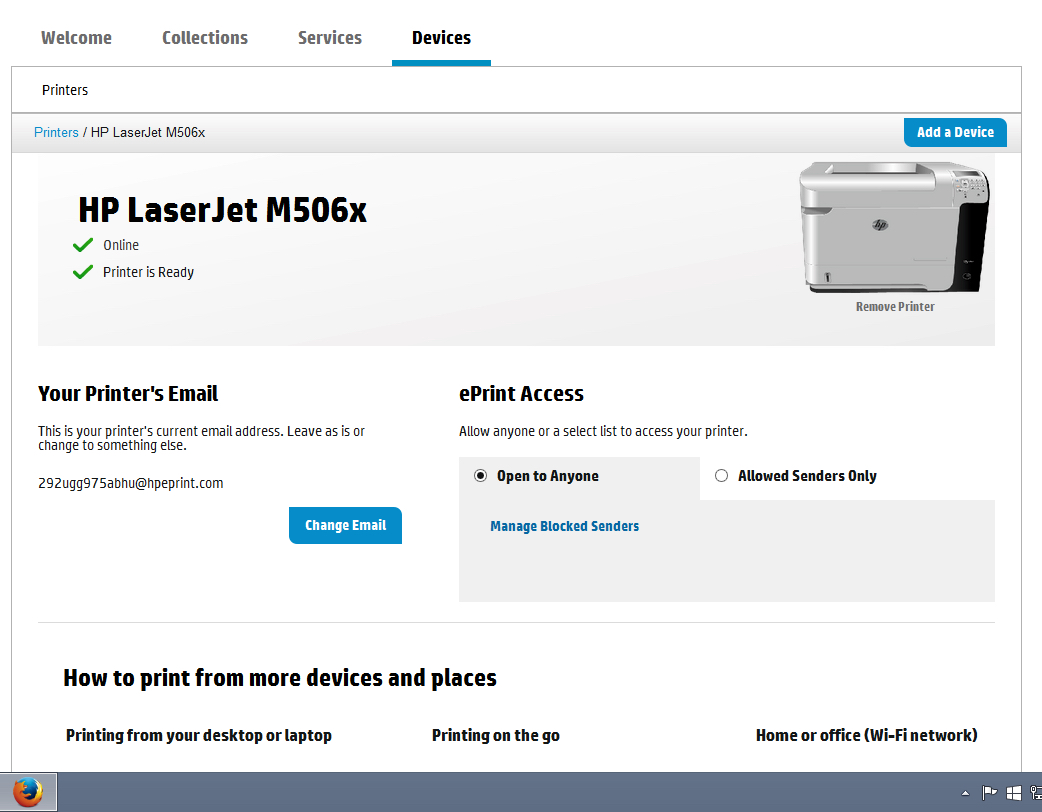
The M506x supports the usual HP cloud printing options
Also on the top panel is a USB port for walk-up printing, which is disabled by default. Sensibly it's hidden under a sprung dust flap, but it's a shame this is the same colour as the printer - you'd forgive users for missing it altogether, particularly as it's on the other side of the output tray from the touchscreen. Where we'd expect the USB port, HP has put the NFC hotspot. Guests can print by installing HP's ePrint app, selecting a document and then physically tapping the phone against the printer - data is sent via a direct wireless connection, so there's no need to grant access to your firm's network.
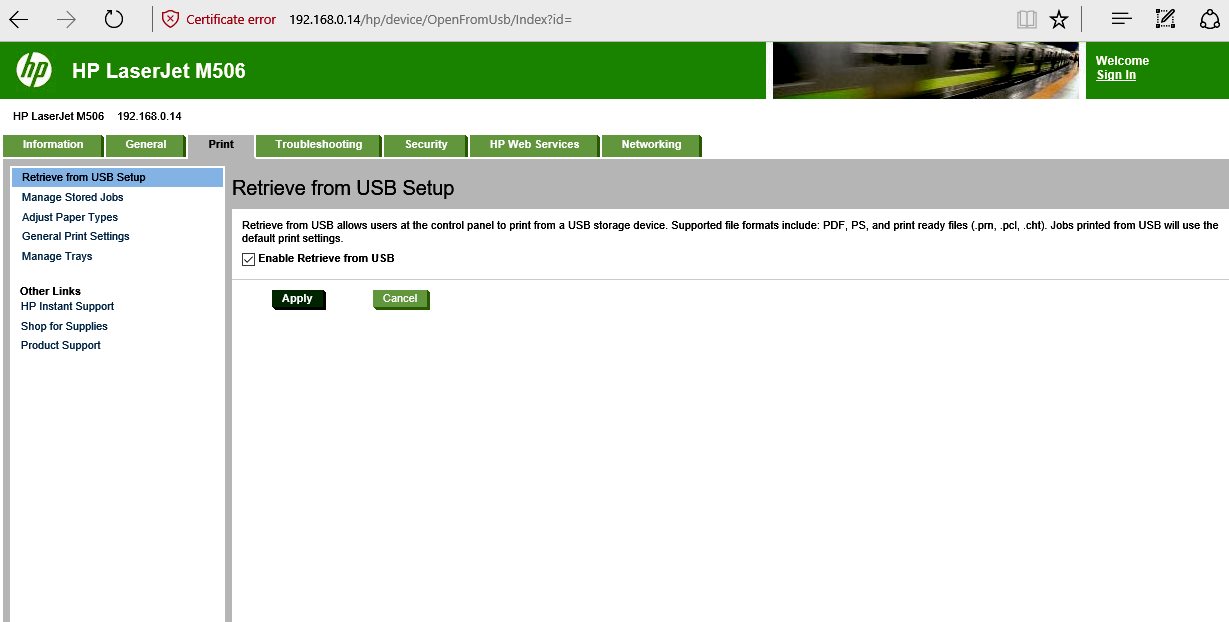
Walk-up USB printing is disabled out of the box. Oddly, the option isn't located in the web interface's security page but gets a whole page to itself
In use
This printer's quick warm up times contributed to a good performance on our 25-page simplex letter test: it delivered the first page in eight seconds, and went on to reach 36.6ppm. Even after a couple of hours' sleep the first page emerged in less than 10 seconds. Because our tests include the time to spool the print job, our complex graphical test reached only 24.8ppm. This slower rate was down solely to job preparation, however: once the printer fired up it delivered the pages at high speed. The best rate we timed was 40.5ppm over 100 pages of text: close enough to HP's stated speed. This speed is halved when printing photos at the maximum 1,200dpi. Print quality was extremely good on text, graphics and photos, although we should note that the toner has an even satin finish, rather than a glossy lustre.
HP ships the M506 range with a 6,000-page combined toner/drum cartridge, and its 18,000-page replacement is available for 163 (196 inc VAT), which works out as 0.9p per page (1.1p inc VAT). The printer's high yield supply, lack of additional consumables and 1,200-page paper capacity should minimise downtime and support calls, while its quick spool up and shutdown help keep noise and power consumption low - we measured a peak of 1,160 watts, dropping to 6W immediately after printing, and 2W in sleep.
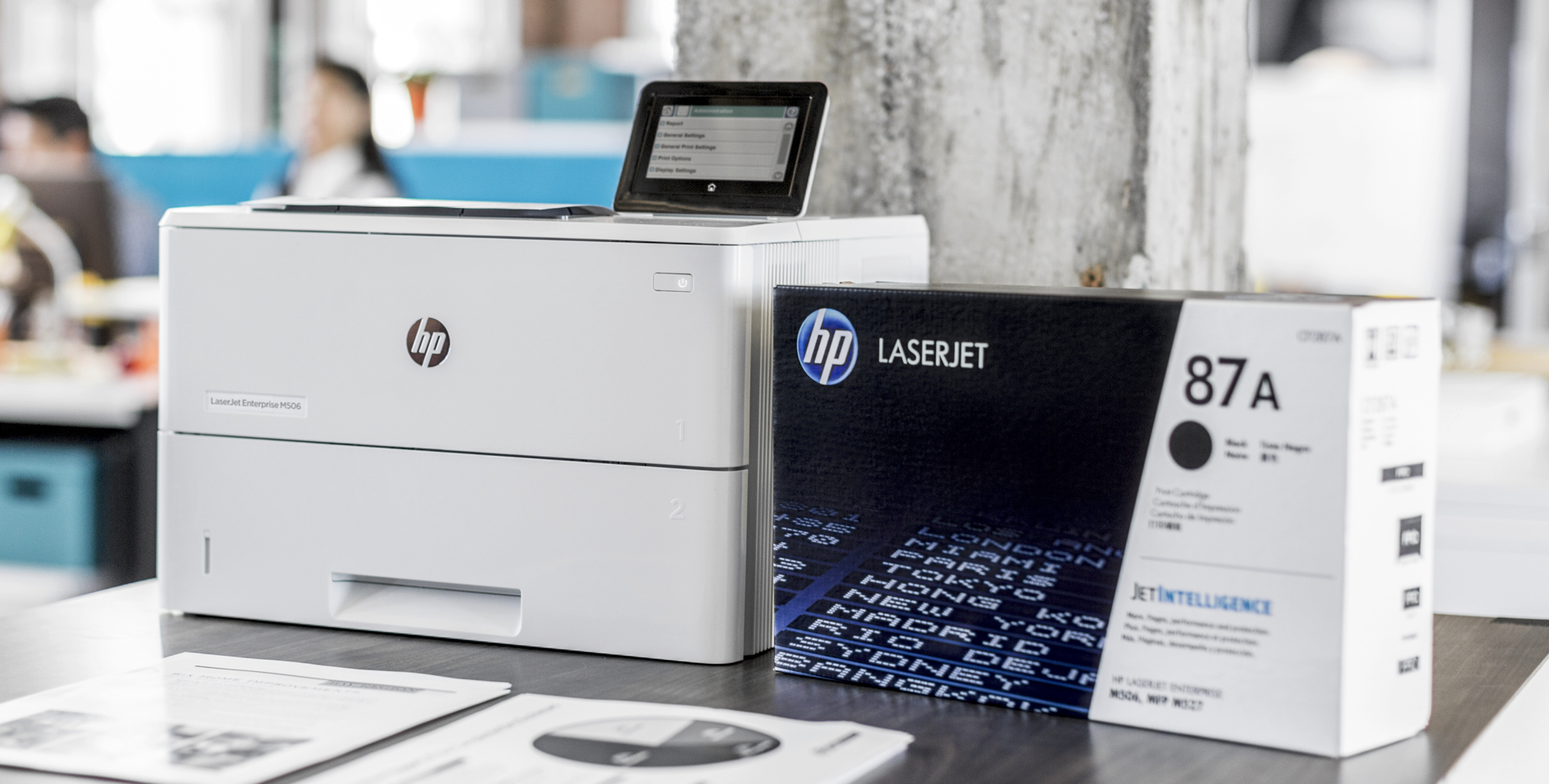
Conclusions
The M506x is a great printer thanks to its impressive specification and scope for some serious upgrades. It performs well, has competitive running costs and shouldn't be too onerous to support. It's a good choice for a busy workgroup or small office, but if you can live without the touchscreen and second paper tray, then the M506dn would be the better choice. In either case, we'd pay to extend the standard warranty.
Verdict
Fast performance, high print quality and best-in-class energy efficiency from this compact workgroup mono laser.
| Print capability: | 1,200dpi, A4/Legal, mono laser |
| Features: | NFC, 4.3in colour touchscreen |
| Speed: | 43ppm A4 simplex, 34ipm A4 duplex |
| Duty: | 150,000 pages per month (maximum), 2,000-7,500 pages per month (recommended) |
| Paper handling: | 100-sheet multi-purpose feed plus two 550-sheet trays for 1,200 sheet total. Automatic duplexer. Optional two additional 550-sheet trays for 2,300 sheet maximum. Maximum 199gsm paper |
| Interfaces: | USB, USB host, gigabit Ethernet |
| Supported operating systems: | Windows XP or later, OS X 10.8 or later, various Citrix and Novell environments |
| Power consumption: | Sleep 2W, Standby 6W, Active 1,160W |
| Size: | 481x418x376mm (WDH) |
| Weight: | 15.8kg |
| Row 10 - Cell 0 | Row 10 - Cell 1 |
| [Benchmarks] | Row 11 - Cell 1 |
| Row 12 - Cell 0 | Row 12 - Cell 1 |
| TTFP (standby/sleep): | 8s / |
| 25 pages text: | 41s (36.6ppm) |
| 24 pages graphics: | 58s (24.8ppm) |
| 10 sides duplex (graphics): | 43s (14ipm) |
| 100 pages text: | 2m 28s (40.5ppm) |
Get the ITPro daily newsletter
Sign up today and you will receive a free copy of our Future Focus 2025 report - the leading guidance on AI, cybersecurity and other IT challenges as per 700+ senior executives
After a brief career in corporate IT, Simon Handby combined his love of technology and writing when he made the move to Computer Shopper magazine. As a technology reviewer he's since tested everything from routers and switches, to smart air fryers and doorbells, and covered technology such as EVs, TVs, solar power and the singularity.
During more than 15 years as Shopper's long-time printer reviewer, Simon tried, tested and wrote up literally hundreds of home, small office and workgroup printers. He continues reviewing smart products and printers for a variety of publications, and has been an IT Pro contributor since 2010. Simon is almost never happier than when surrounded by printers and paper, applying his stopwatch and a seasoned eye to find the best performing, best value products for business users.
-
 Third time lucky? Microsoft finally begins roll-out of controversial Recall feature
Third time lucky? Microsoft finally begins roll-out of controversial Recall featureNews The Windows Recall feature has been plagued by setbacks and backlash from security professionals
By Emma Woollacott Published
-
 The UK government wants quantum technology out of the lab and in the hands of enterprises
The UK government wants quantum technology out of the lab and in the hands of enterprisesNews The UK government has unveiled plans to invest £121 million in quantum computing projects in an effort to drive real-world applications and adoption rates.
By Emma Woollacott Published
-
 Businesses are taking their eye off the ball with vulnerability patching
Businesses are taking their eye off the ball with vulnerability patchingNews Security leaders are overconfident in their organization’s security posture while allowing vulnerability patching to fall by the wayside.
By Jane McCallion Published